22 Gray Vegetables and Fruits That You Didn’t Know About

Gray food is not common, and there was a time when I would associate this coloring with food that wasn’t delicious. However, in recent years, I’ve discovered a variety of mouthwatering gray-colored veggies and fruits that have become an important part of my daily menu.
In addition to those completely gray, others may come in a combination of colors, making them more appealing to the eye. Still, don’t let a somber color cheat you out of a savory and nutritious meal! To help you figure out which shade of gray holds the most flavor, I have enlisted veggies and fruits from all around the world of such coloring. Let’s check out the list!
List of Gray Vegetables
Gray vegetables are extremely rare. Some of these edibles are variations on plants like zucchini or peas. On this list, you will also find mushrooms, which technically are not vegetables, but I put them here since I treat them as such when preparing meals.
Mexican Gray Squash

Summer squash is a gray version of zucchini. It is a grayish-green firm vegetable originating from Mexico. The mild and slightly nutty flavor makes it perfect for boiling, frying, baking, and grilling.
Its texture, a well-balanced combination of crunchy and soft, made it one of my family’s favorite veggies. I recently discovered a recipe for crispy summer squash rings with tzatziki salad. This mix of deep-fried squash and herbal, tangy, and refreshing tzatziki is a lovely solution if you wish to prepare a fast and light meal!
Additionally, if you are looking for a way to diversify your vegan menu, try making raw gray zucchini pasta — it’s absolutely delicious!
Garlic
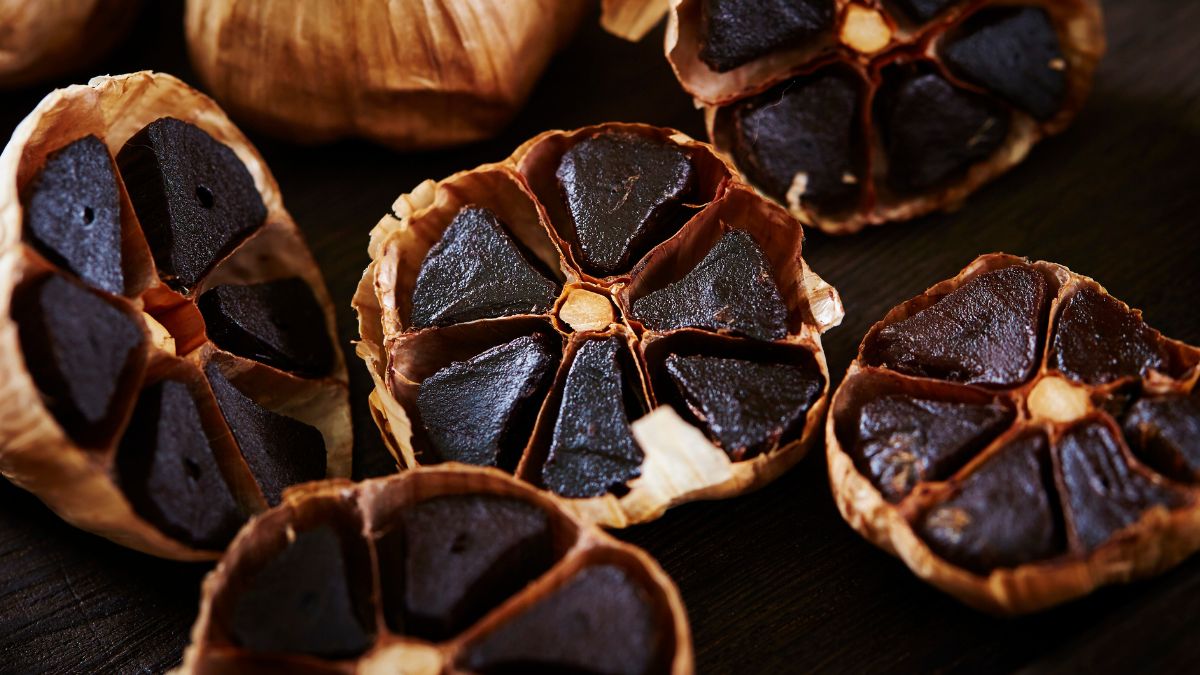
Although garlic is commonly white, there are some variations depending on the minerals it absorbs while growing. Usually, only garlic peels have this ashy color. Cloves might be pink or yellowish, in case the garlic is old.
For me, garlic is an essential ingredient in any gourmet meal. I am aware that not everyone shares my opinion, so I tone it down whenever I am cooking for someone else. Still, whenever there is an opportunity to serve garlic aioli, I will seize it!
Dwarf Gray Pea
The dwarf gray pea is an unusual plant that makes one of the fundamental ingredients in Asian cuisine. It is a flat, crunchy, nutty, and semi-sweet vegetable that makes a lovely addition to salads or soups.
It makes a simple upgrade to any meal that lacks greenery, and you can find it in almost any Walmart or Tesco store. Occasionally, I like to visit my local market to pick up freshly picked pods as well.
Pearl Oyster Mushrooms
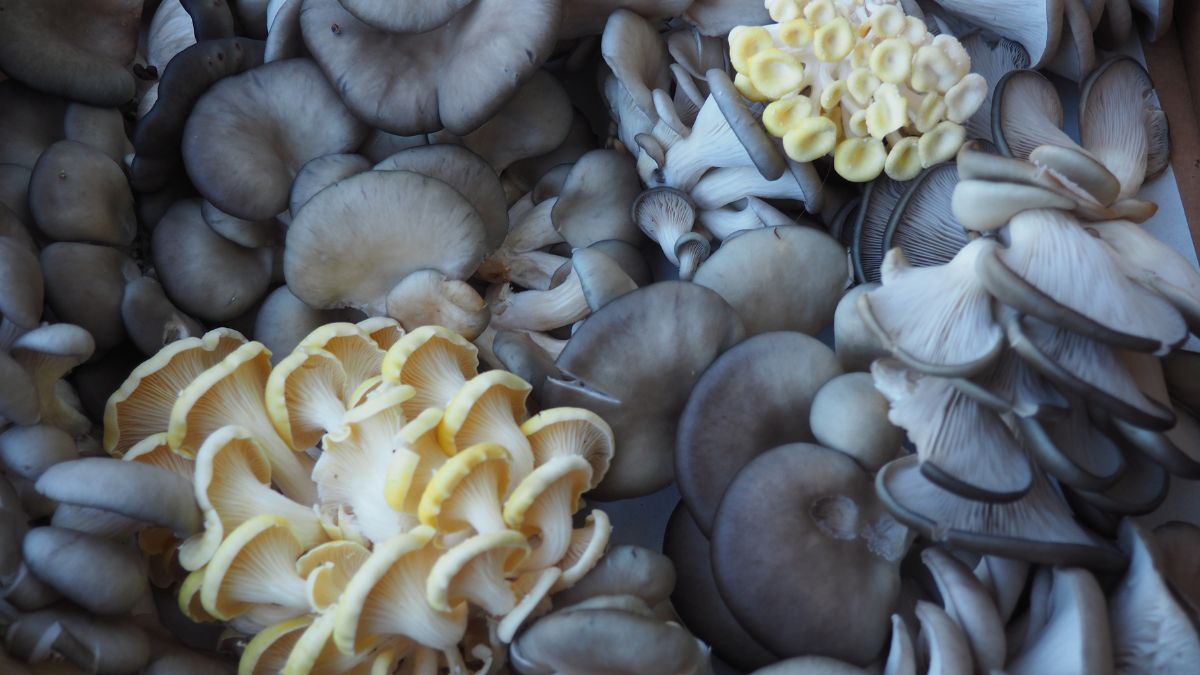
Pearl oyster mushrooms are delicious fungi growing in the woods. It is a delicious grayish-brown mushroom named after its resemblance to the oysters. Its delicate flavor makes it a perfect addition to various meals, from stir-fries and risotto to soups.
One of my favorites is easy and quick stir-fried oyster mushrooms with garlic and parsley. Simply melt some butter and toss in chopped oyster mushrooms, and once they start releasing liquid, add garlic. Stir-fry it until mushrooms become golden, and add parsley at the very end.
Preparing it will not take more than 20 minutes, and you will enjoy every savory bite!
Gray Morels
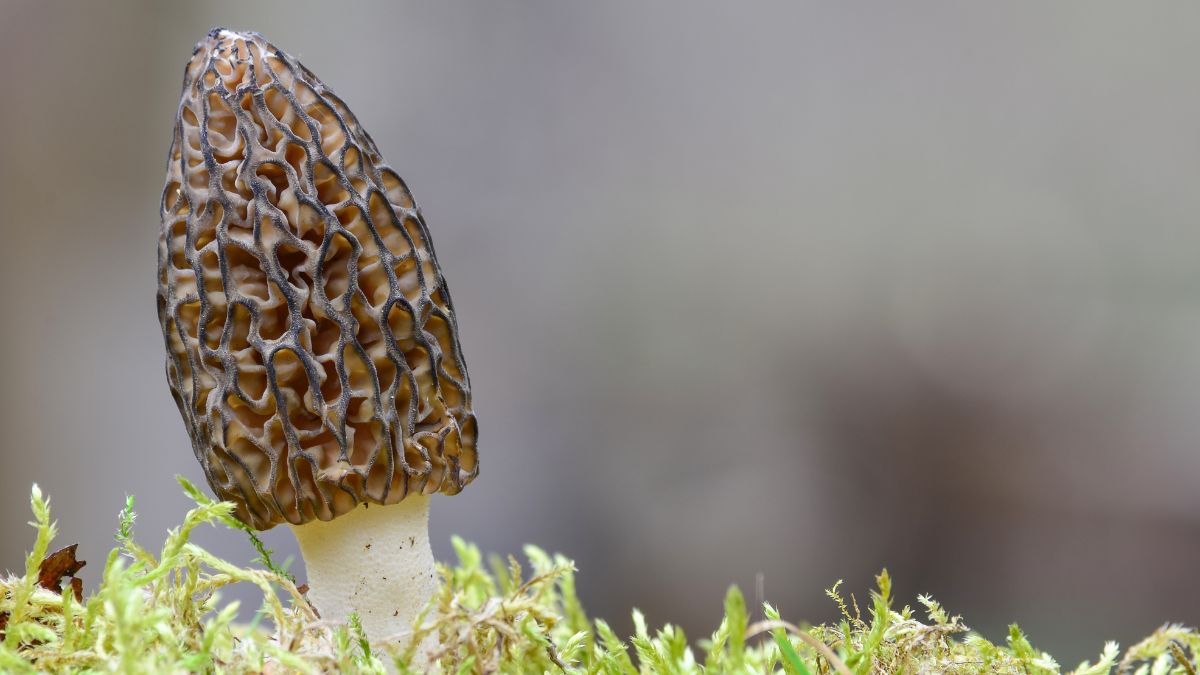
Another unusual fungi, gray morels are easily recognizable by their unique honeycomb-like cap. If you are in the mood for mushroom hunting, you’ll find them in wooded areas during springtime, often near trees.
With their rich, earthy flavor, gray morels elevate the taste of various dishes such as sauces, risottos, and sautés. Also, I like to make stews with them and other wood mushrooms.
Truffle

The truffle is a type of underground mushroom that is considered a delicacy in the culinary world. This highly prized fungi grows in close association with the roots of certain trees, such as oaks and hazelnuts.
With its distinctive and intense aroma, the truffle is a true “diamond of the kitchen” and an upgrade for numerous meals. Truffle hunting, traditionally carried out with trained dogs or pigs, adds to the allure of these elusive fungi. Their rarity and complex growth cycle contribute to their high market value, making them among the most expensive foods in the world.
Huitlacoche
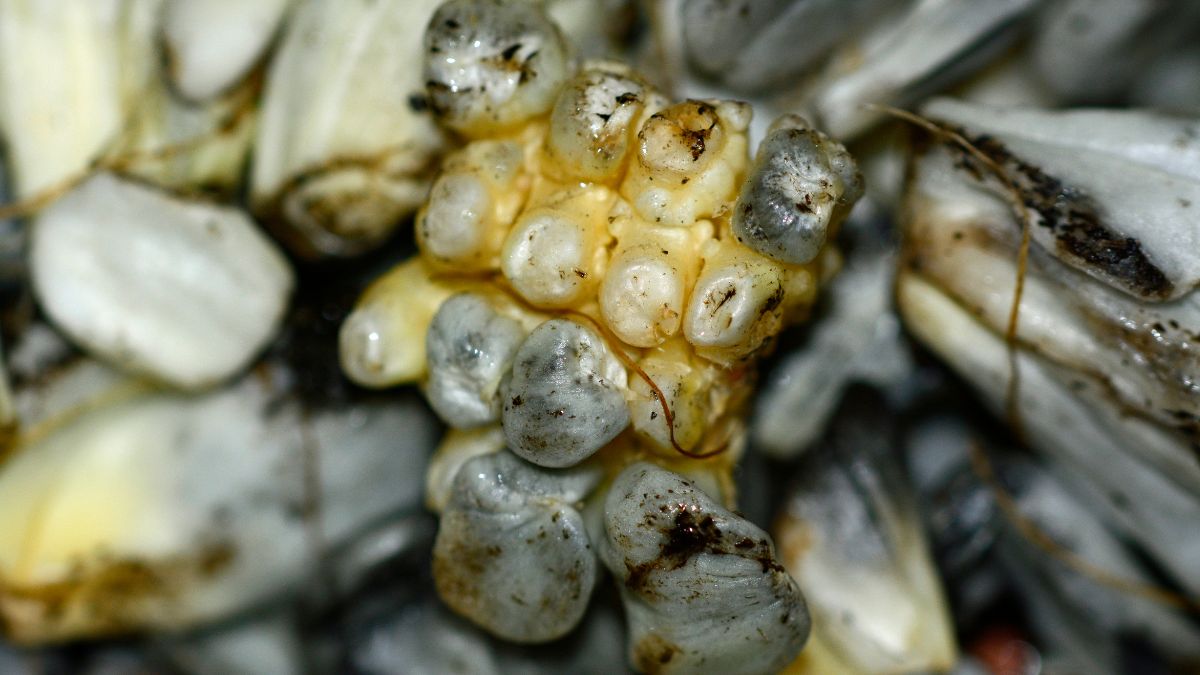
Huitlacoche, also known as “corn smut,” is a specific culinary delicacy. It is a fungus that infects corn kernels, and it has been a traditional ingredient of Mexican cuisine for centuries. It transforms the kernels into swollen, grayish-black masses that are rich in flavor and have an earthy, mushroom-like taste.
Some of the most common dishes containing huitlacoche are quesadillas, tacos, and tamales. Despite its unappealing appearance, its distinctive taste and cultural significance have led to its increasing popularity in gourmet circles worldwide.
List of Gray Fruits
Unlike vegetables, gray fruits are more versatile. From America, through Africa and Europe to Asia — if you look carefully, you will find gray fruit in each continent. But you don’t have to because I did it for you!
Guava
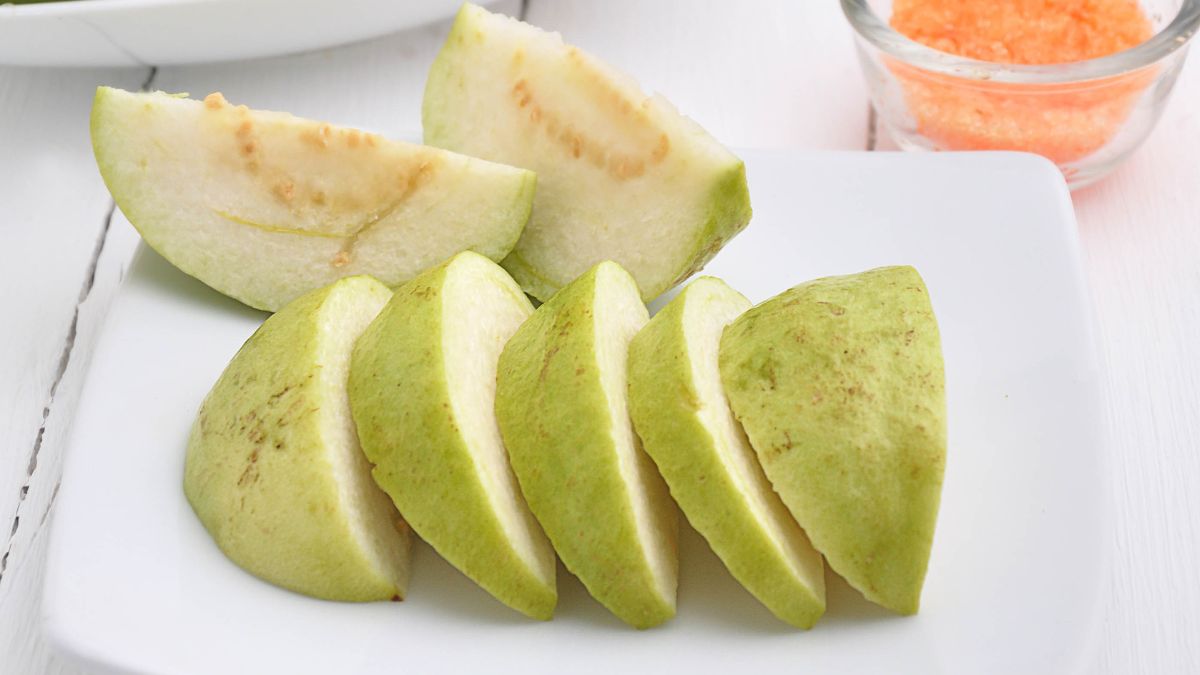
Gray guava is a variety of guava fruit that typically has a greenish-yellow skin when ripe. Despite its name, the fruit’s skin may not always be gray — it can have a grayish hue along with other colors.
Its sweet and aromatic flavor makes it. The flesh of the gray guava is usually creamy white, soft, and dotted with tiny seeds. This tropical fruit is not only delicious to eat on its own but is also commonly used in beverages, jams, jellies, and desserts due to its unique taste and fragrant aroma.
Gray Hubbard Squash
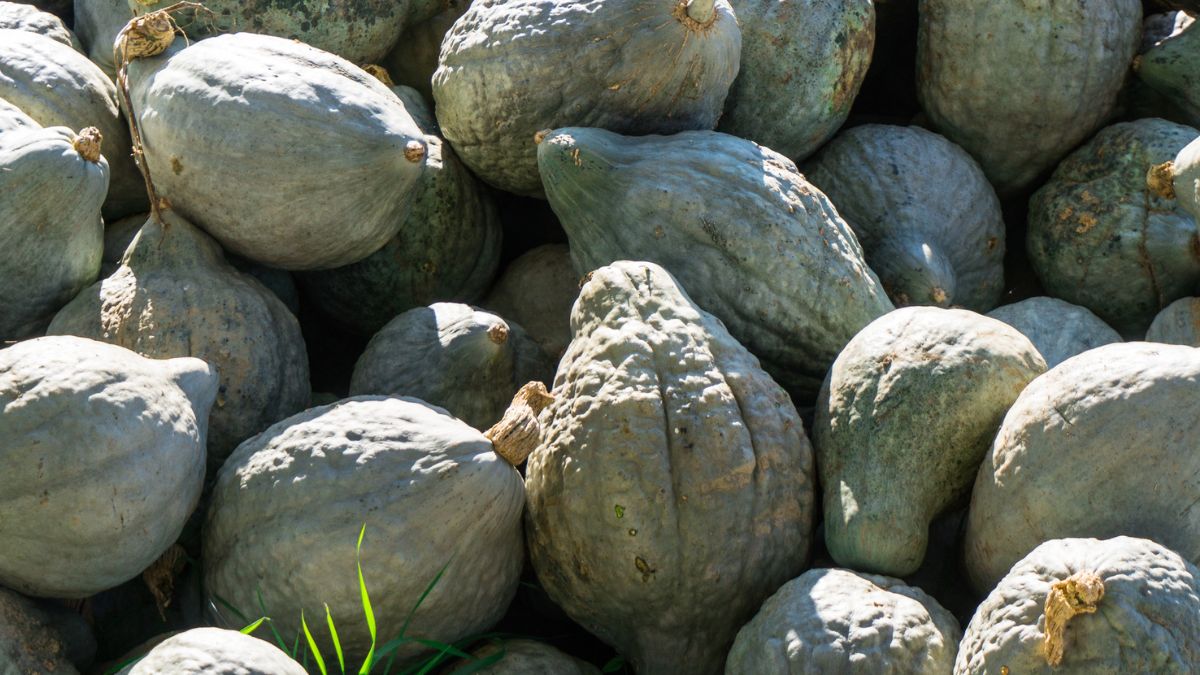
This winter squash variety is known for its distinctive appearance and sweet, nutty flavor. The skin of the squash is usually gray or blue-gray, bumpy, and rough, and it may have an oblong or teardrop shape.
Its golden-yellow insides are perfect for pottages and soups, and you can also bake it or roast it to make casseroles. Its sweet and earthy flavor makes it a delicious pie filling, which I make pretty often as soon as the holiday season starts.
Its long storage life makes it a staple for the fall and winter months, as it can last for several weeks if stored in a cool, dry place.
Salted Plums

Salted plums are a popular and unique Japanese culinary treat. These are actually gray when dried. When pickled, these plums are preserved in a mixture of salt, red shiso leaves, and sometimes other ingredients that add to their flavor. This process creates a blend of sweet, sour, and salty tastes.
Salted plums might be just what you were looking for if you enjoy unusual flavors. They are common ingredients in dishes such as rice balls, rice, and porridge and may also accompany tea. Although they are usually gray when dried, they are dark red after pickling.
Yubari King Melon

The Yubari King Melon is an exceptionally sweet Japanese melon with a juicy texture. It grows exclusively in the Yubari region of Hokkaido, and it represents a symbol of luxury.
Their grayish-green skin contrasts their distinctive orange flesh. Yubari King Melons are meticulously cultivated and protected during growth to ensure their high quality. They usually have a high price, and it takes more work to acquire them.
However, if you do get a hold of them, you can mix them into a fruit salad or simply enjoy the flavor alone.
Charleston Gray Watermelon

The Charleston Gray Watermelon is a classic and iconic variety known for its large size, sweet flavor, and distinctive appearance. Developed in the 1950s, this heirloom watermelon boasts a tough gray-green rind that provides excellent protection for the fruit inside. The flesh of the Charleston Gray is juicy and deep red, with a refreshing sweetness that makes it a favorite for summertime snacking and picnics. Its oblong shape and impressive size make it a visually striking choice. While modern watermelon varieties have gained popularity, the Charleston Gray remains cherished by those who appreciate its nostalgic charm and delicious taste.
Wood Apple

The wood apple is an unusual tropical fruit originating from India and Sri Lanka. It has a hard gray or pale green, woody shell. This shell holds aromatic and fibrous pulp that can be either pale yellow or brown, depending on how mature it is.
With a sweet, tangy flavor profile, wood apples are a favored ingredient in refreshing beverages, jams, and chutneys. In some cultures, the wood apple is also revered for its potential medicinal properties.
Baobab Fruit
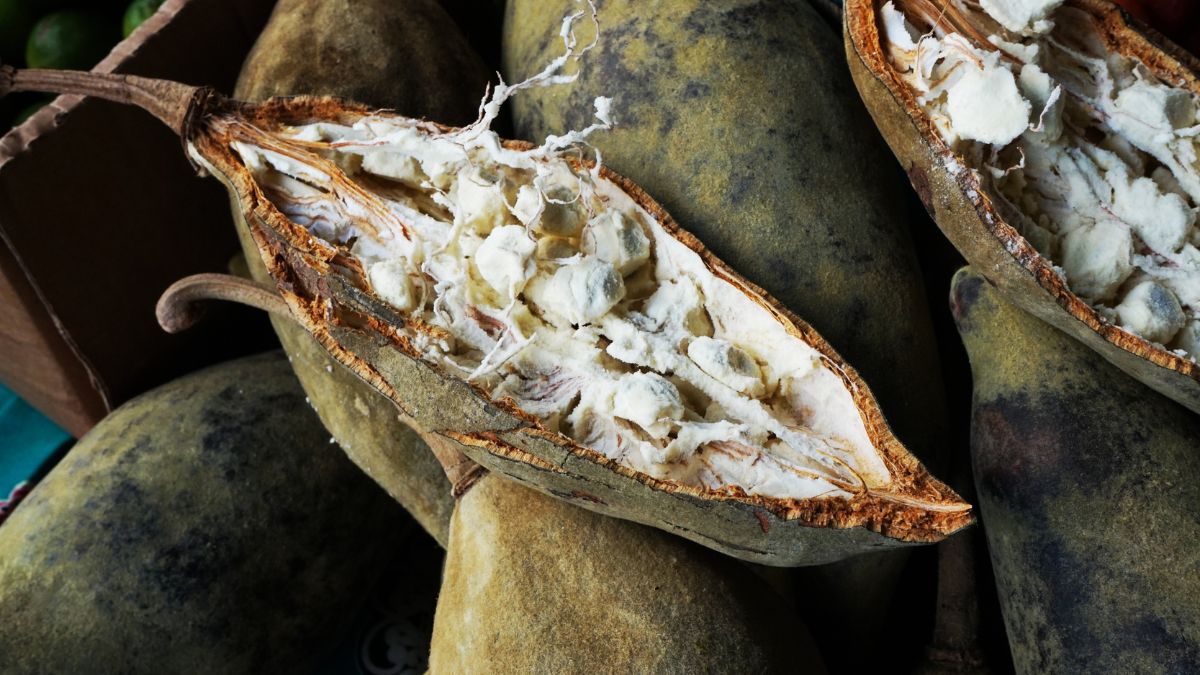
The baobab fruit is a one-of-a-kind tropical fruit that grows on the famous baobab tree, recognized for its size and distinct look. The fruit is often called the “superfruit of Africa” due to its remarkable nutritional value. It has a hard outer shell that protects the powdery grayish-white pulp inside. It has a tangy, slightly sour flavor that resembles a mix of citrus and tropical fruits. [1]
The pulp has various culinary applications, from smoothies and juices to jams, and you can even use it as a natural thickener. Unless you are from Africa, it is not easy to get a hold of this fruit. However, Walmart sells baobab fruit powder in the organic section, and I love to use it as a substitute in smoothies.
Yellow Dragon Fruit
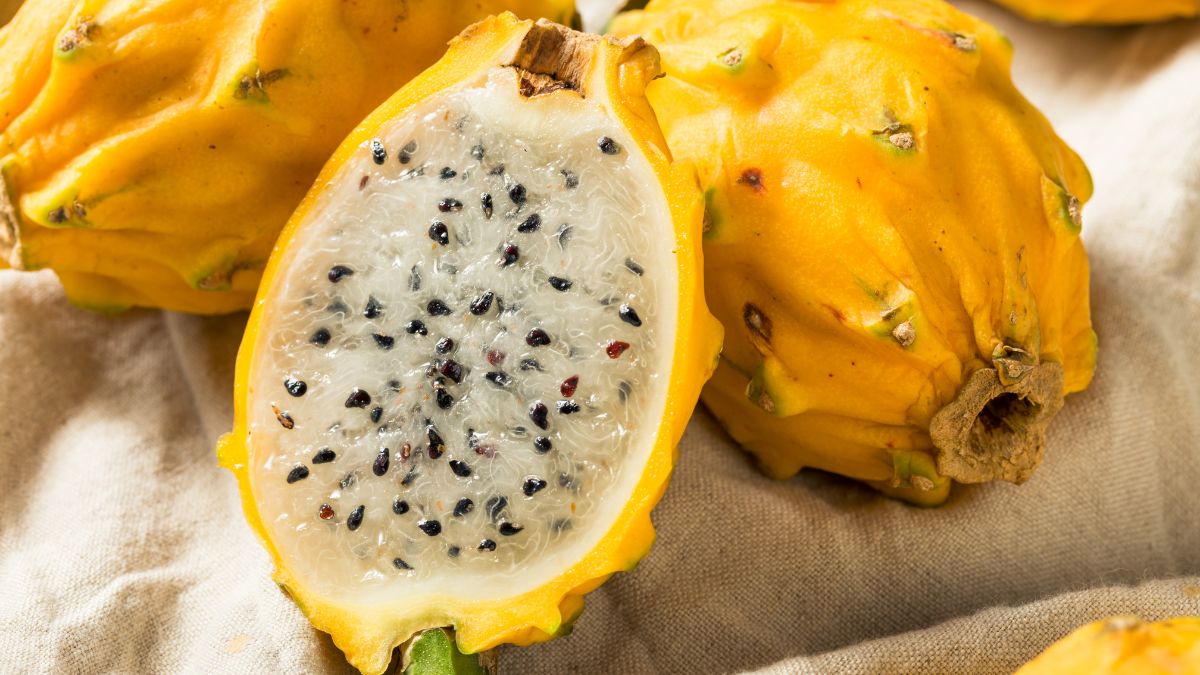
Yellow dragon fruit is a vibrant and visually appealing tropical fruit with a distinct appearance. This fruit is covered with bright yellow skin and white-grayish flesh speckled with tiny black seeds. Subtly sweet flavor, with hints of citrus and tropical notes, always puts a smile on my face.
My family and I like adding it to fruit salads, smoothies, and desserts. It adds a burst of flavor to morning yogurt bowls and serves as a delightful enhancement for mojitos at dinner parties!
Which of these do you use in your kitchen? Excited to read about your cooking practices in the comments below!
